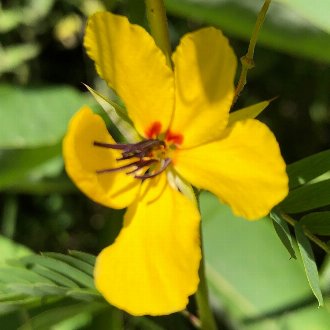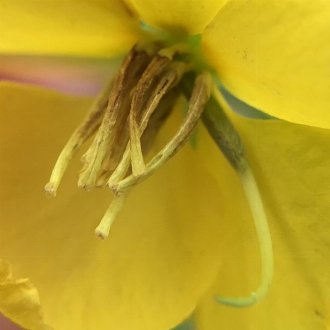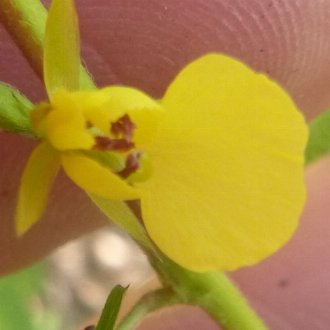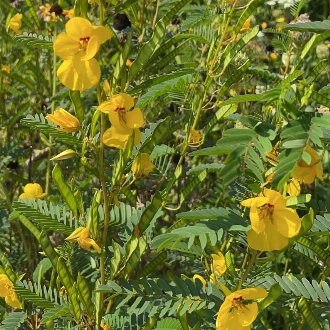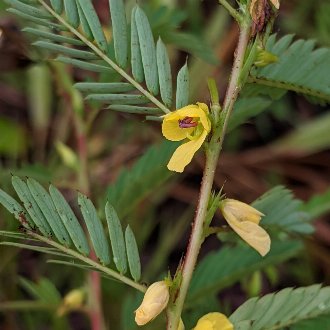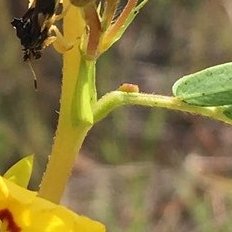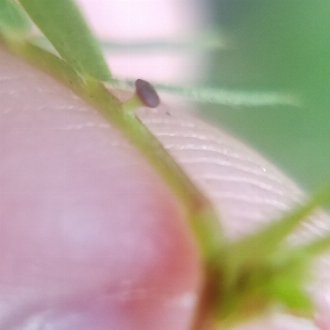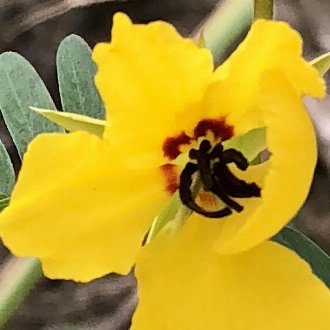Partridge Pea vs Sensitive Partridge Pea
These two species look similar, have wide ranges of overlap, and can sometimes occur in the same habitat. They are easily told apart by flowers, but can be challenging to tell apart otherwise. With magnification, they can be told apart by examining the petiolar glands. Chamaecrista fasciculata is often slightly larger and upright in habit, and ranges farther northwest, where it can be found in prairies. Chamaecrista nictitans ranges farther northeast as well as farther south.
Partridge Pea (Chamaecrista fasciculata) | Sensitive Partridge Pea (Chamaecrista nictitans) |
A showy, nitrogen-fixing annual of sunny, average to dry habitats, native to central to eastern North America. | An annual of nutrient-poor habitats, native from the southeastern U.S. south through much of South America, often with a mat-forming habit. |
Flowers only slightly aymmetrical, with petals more-or-less similar in size. Flowers sometimes open completely, with all petals held flat in the same plane. Photo © Morgan, CC BY 4.0. | Petals strongly asymmetrical, bottom petal much larger than others. Flowers rarely open completely, top petals usually remaining closed around the flower center. Photo © Annika Lindqvist, CC BY 4.0. |
Flower have 10 stamens. Photo © Michael Pirrello, CC BY 4.0. | Flowers have 5 stamens. Photo © Christopher Warneke, Public Domain. |
Flowers showy, large relative to leaves. Petals 1-2cm in length. Photo © Julia Szilvas, CC BY 4.0. | Flowers smaller relative to leaves, may even be inconspicuous on some plants. Longest petal usually 8mm or shorter, others often much shorter. Photo © Scott Allen Davis, CC BY 4.0. |
Gland on the petiole (stem attaching each leaf to the main stem) is usually sessile (directly attached to petiole.) Photo © Mathew Zappa, CC BY 4.0. | Gland on each petiole is usually attached by a short but distinct stalk. (May require magnification to view.) Photo © Leila Dasher, CC BY 4.0. |
Four of the five petals (all except the bottom petal) have maroon-red marks at the base. Markings more likely to be visible at a glance. Photo © tzeducation, CC BY 4.0. | Usually only top two petals have reddish markings near the base. Markings may be difficult to see. |
References & External Resources
These short lists show only links helpful for ID. For a complete list of references and resources also covering other aspects of ecology, visit the links section of the full article on each plant, which is the first entry here.



